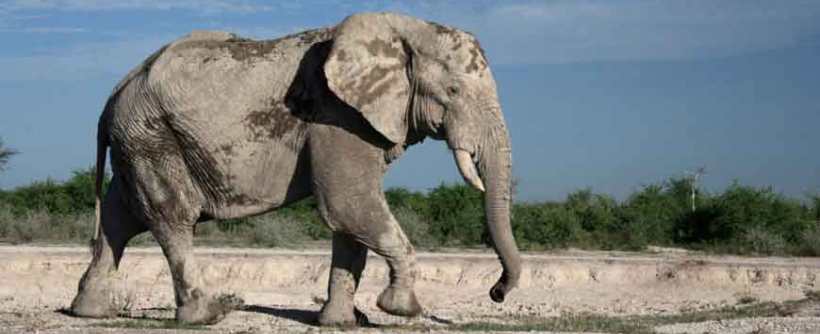Nxai Pan Camp (Nxai Pan National Park - Adjoining the Makgadikgadi Pans) Botswana

Location:
Nxai Pan National Park lies just north of the Maun-Nata road and adjoins Makgadikgadi Pans National Park on its northern border. Nxai Pan was originally state land and an area of 1676 sq. km was declared a game reserve in 1970, and then in 1992 the boundaries were extended to include Baines Baobabs to give the present total area of 2578 sq km and National Park Status was granted. The Nxai Pans were once part of the great lake that covered central Botswana – which included The Okavango Delta, Makgadikgadi and Lake Ngami to name a few. Livingstone passed this way during the middle 19th century and soon traders and explorers followed and it became an important trade route. Kgama Kgama pan in the center of the park held water at that time and many travelers came here to replenish their water supply and to rest.
In 1861 – the famous painter Thomas Baines arrived to paint an unusual group of baobab trees – one of which lies on its side and hence these beautiful group of tree’s became known as “Baines Baobabs”. Other painters including Prince Charles have been captivated by these amazing trees and have also painted them. These are located on the southern side of the park. The Pan itself is another fossil lakebed about 40 sq km in size. The landscape is largely covered by grassland and dotted with clusters of umbrella acacia tree’s and mopane woodland in the north. During the rains from November to April – the pans become covered in grass which is a landscape very similar to the Kalahari. Nxai Pan has also achieved fame from the IMAX movie “Roar” – where Tim Liversedge and National Geographic filmed this epic documentary that showcases a battle between an aging lion and a young challenger, who wants the older lion's wives and the water hole.
Animals and Birds.
Nxai pan is well known for its huge springbok population and once the rains have started, gemsbok, elephant and zebras migrate to the region. At this time zebra’s come in their thousands to drop their young at Nxai Pan. Extraordinarily large herds of giraffe’s can be seen with up to 30 in a group. These large herds of zebras, springbok, and wildebeest attract many predators – lion, cheetah, jackal and both spotted and the elusive brown hyena, as well as the endangered wild dog and the secretive leopard. There are large numbers of bat-eared fox and raptors that prey on the rodents and reptiles. At times, Rhino’s have also been sighted. Also to be seen are the eland, greater kudu and red hartebeest. Once the rains have started – the bird life is excellent.
The
Camp:
Situated in the tree line – we have 8 purpose built desert rooms – all rooms have thatched roofs and insulation so it is cooler in the summer and warmer in the winter. The main area consists of a dining room, lounge area and a viewing deck. We also have a swimming pool, library and curio shop.
8 purpose built desert rooms: 7 x twin rooms 1 x family room – sleep 4 guests Total number of guests we can accommodate is 18 guests We also have one guides room All solar powered Fans in all rooms Outside showers and private viewing deck All rooms and main area connected by slightly raised walkways. Activities: Game drives in open 4 x 4 vehicles. Historical tours to Baines Baobabs Nature Walks **Please note that Nxai Pan is in a national park and an ecological sensitive area – for this reason we can not drive off road or at night!
Accommodation Rates:- From $670 per person per night sharing - Please contact us for a quote and suggested itinerary

